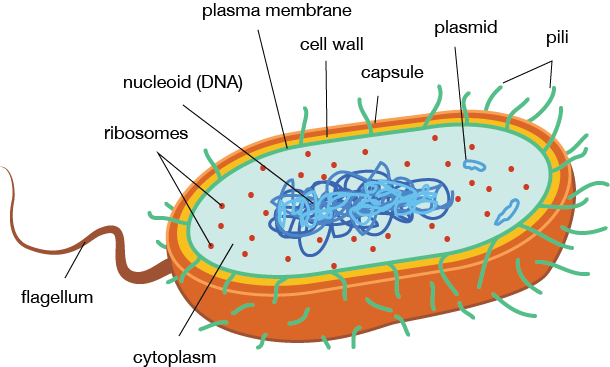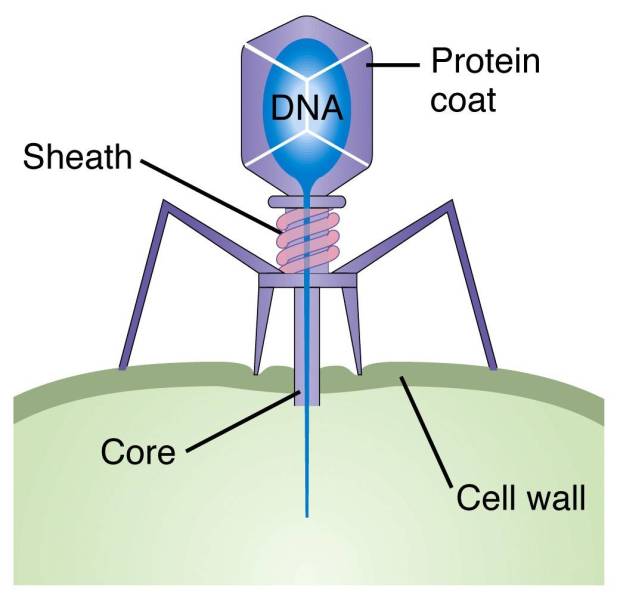Bacteria. So small yet so vile. They are just one of the kinds of microorganisms that can be pathogenic to humans, and result in diseases such as tuberculosis and bacterial meningitis. There are many antibiotics available that can help treat bacterial infections, but they are becoming less and less effective as bacteria become more and more genetically resistant…but how?
There are two main ways that bacteria can evolve genetically, which could resultant in them becoming resistant to antibiotics and medications. The first is conjugation. Bacteria are prokaryotic cells, and are very dissimilar to the cells we humans are made up of. A striking difference is the location of the genetic information – or DNA – in cells. In eukaryotic cells (the cell that humans have), there is a distinct nucleus surrounded by a nuclear envelope with pores to allow nucleocytoplasmic transport, for example the movement of mRNA out of the nucleus after transcription in protein synthesis. There are no nuclei in prokaryotic cells to contain the chromatin. There is a bacterial nucleoid, which is really just an area of the cell where most of the genetic information is present. In addition, there are plasmids, which are the ‘just in case’ supplementary genes. This is where the antibiotic resistant genes would be stored, as these genes do not need to be actively playing a part in cell function all the time, only in times of crisis. In conjugation, the bacteria create protrusions from the murein cell wall called pilli. The pilli extend and can bind to other bacteria; they can even bind to bacteria that are not the same species. The pilli bring the other cell in so that the two cells are in contact, and the DNA of the plasmids is copied and transferred to the other bacterial cell.

This presents a significant problem for humans. If there were only a small minority of bacterial cells that were resistant to an antibiotic, that could change within hours as they give the resistant gene to other cells that do not have the resistant gene, that could then spread it again. The fact that the process of conjugation occurs between species is even more alarming.
The second way is a process called transduction, which is assisted by viruses called bacteriophages. I say assisted, but actually the phages are really not trying to help the bacteria; they are only trying to help themselves. The aims of viruses are basic; survive and reproduce. Viruses are parasites and need a host cell in order to reproduce, so they inject their own genetic material into bacterial cells in order to hijack the organelles and produce more copies of themselves. Within this process, the phages cut up the bacterial chromosomes; this can be all of the chromosomes if the phages are generalised phages, are certain parts of the DNA is the phages are specialised. Then, the phage sometimes destroys the bacterial cell by bursting it (cell lysis), and reassembles its now many selves.

However, around 1 in 10000 times this happens, something goes slightly wrong. This likelihood may seem very low, but remember that prokaryotic cells are around 0.5 micrometers in diameter, and that this process happens millions of times every minute. Sometimes, as the phage reassembles itself, it picks up bacterial chromosomes instead of its own. When this phage injects its genetic material into the next bacterium, it also injects the chromosomes of the previous bacterium. This causes genetic material to be passed around the bacteria kingdom, and is responsible for the evolution of the superbug MRSA.
These genes of antibiotic resistance will be passed down to the offspring of the bacteria, and will become more and more prominent within the genome by the process of natural selection.
Photos: bacteria cell http://media1.shmoop.com/images/biology/biobook_cells_12.png , bacteriophage https://www.mun.ca/biology/scarr/MGA2-10-24.jpg

